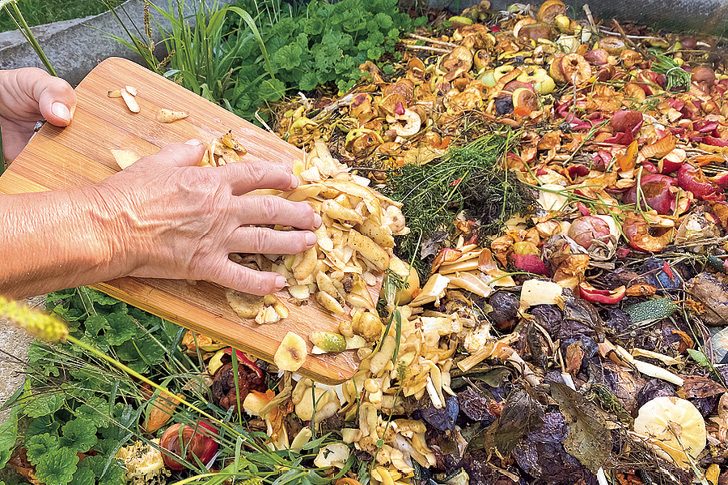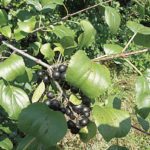Why compost? Composting is a natural process whereby organic material such as yard clippings or food waste decomposes into a nutrient-rich mulch or additive to soil. Composting is a way to reuse waste rather than sending it into a landfill and also a way to help your plants get the nutrients they need to help them grow. It’s a win-win.
The basic building blocks of a compost pile are carbon and nitrogen. Carbon is found in almost all organic matter and should make up the bulk of your compost pile. Nitrogen is also crucial for composting, but should be added in lesser amounts. As a general rule, higher amounts of carbon are found in “browns” such as cardboard, newspaper, wood chips, and straw. Higher amounts of nitrogen are found in “greens” such as grass clippings, weeds, and vegetable scraps. The ideal ratio of carbon to nitrogen is about 30:1. Too much nitrogen and your pile may start to smell, while too little and the composting process will slow down.
To get started, you will need some sort of compost container. This can be as simple as arranging some fallen logs into a box shape that you can use as a makeshift bin, or as complex as a full three-chambered system for different stages of decomposition. You can also use barrels or commercially built compost tumblers. Whichever of the many options you choose, you’ll want to keep your compost contained, and you’ll want to make sure your structure allows for air circulation. According to the University of Minnesota Extension, active composting happens when your compost pile is between 130 and 160 degrees. Your compost pile should be turned once or twice a month to prevent the center from cooling down too much. This can be done with a rake or can be done by rolling if your compost is in a barrel or a container specifically designed to be turned. (Keep this in mind when buying or building your structure.)
Much of the yard waste a typical homeowner encounters is compostable. This includes fallen leaves, grass clippings and weeds, all of which make a great start to your compost pile. When first starting, layer your compost and add a little bit of water to dampen the mix. From there you can add nitrogen: this can take the form of a compost starter which includes nitrogen and necessary microbes, or a lawn fertilizer that’s high in nitrogen. Either way, adding in nitrogen will help the bacteria that makes composting possible.
As you build your compost pile, you can continue adding new layers and adding water if needed to prevent it from drying out. For many people, composting is a great way to reduce the amount of food waste that ends up in landfills. Foods such as vegetables, fruits, coffee grounds, tea bags, nut shells and eggshells can be composted. Do not compost animal products such as meats or dairy products, or oils and other greasy foods—these can cause your pile to smell and can attract all sorts of wildlife, from flies to bears.
As your pile decomposes, the University of Minnesota Extension recommends starting new compost piles with new materials, rather than adding scraps to a pile that is mostly composted. During the summer, your compost pile should decompose within a few months. Composting is still possible in the winter, but there are a few things to keep in mind: first, remember that the need for balancing carbon and nitrogen remains the same. Since food scraps are nitrogen-rich, you will need to have a supply of carbon-rich browns to layer with food waste. Also be aware of the risk for too much moisture from snowfall in an open-air container; a covered compost tumbler works well for keeping excess moisture from snow out of your compost.
Once you have a fully decomposed pile, your compost will be about half of its original height and look like dirt, with no easily recognizable scraps. Mixing compost into your garden beds can provide a nutrient boost and help balance water drainage issues that can occur in sandy, rocky, or heavy clay soils. You can also add compost into the soil when planting trees and shrubs. Reusing the organic matter from your property is one of the easiest ways to care for the earth and enjoy a healthy garden in the process.





